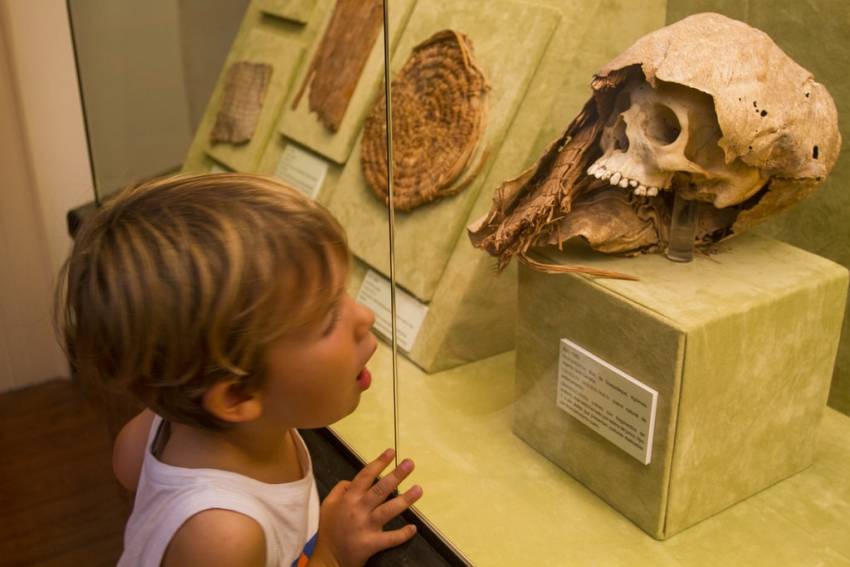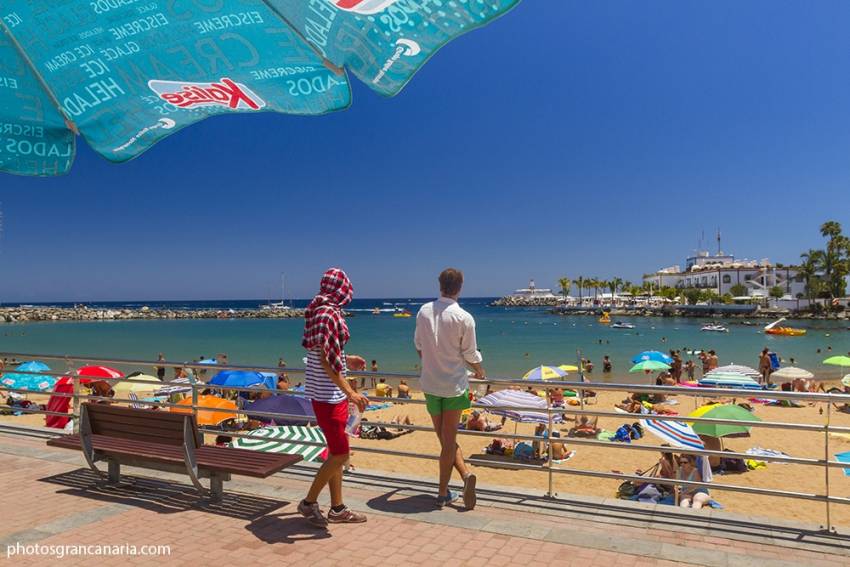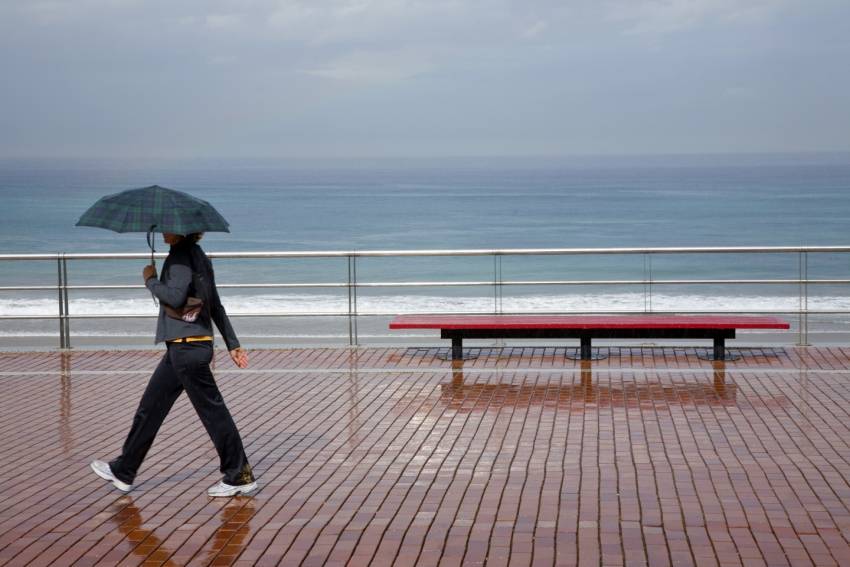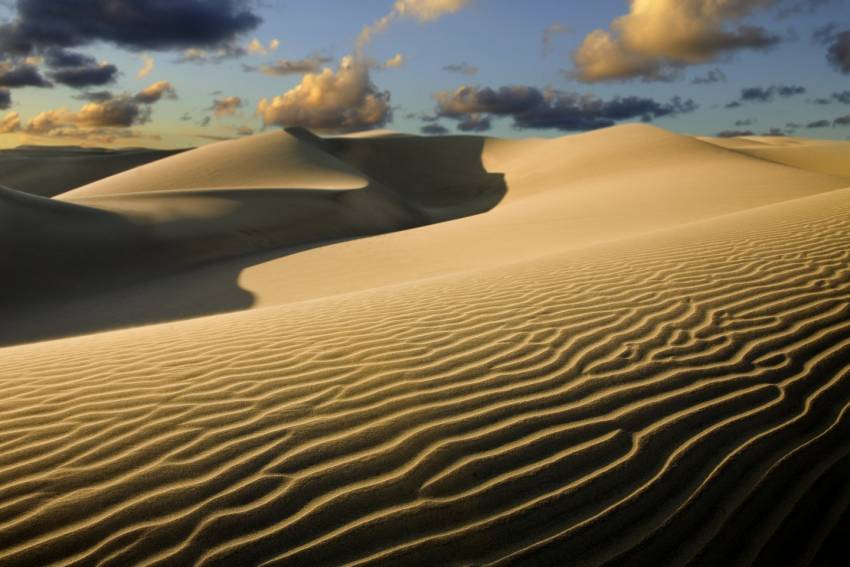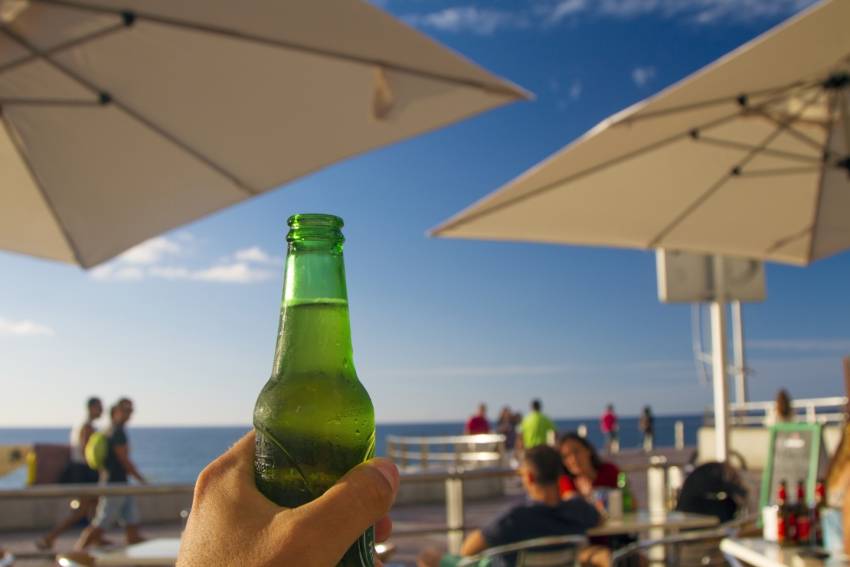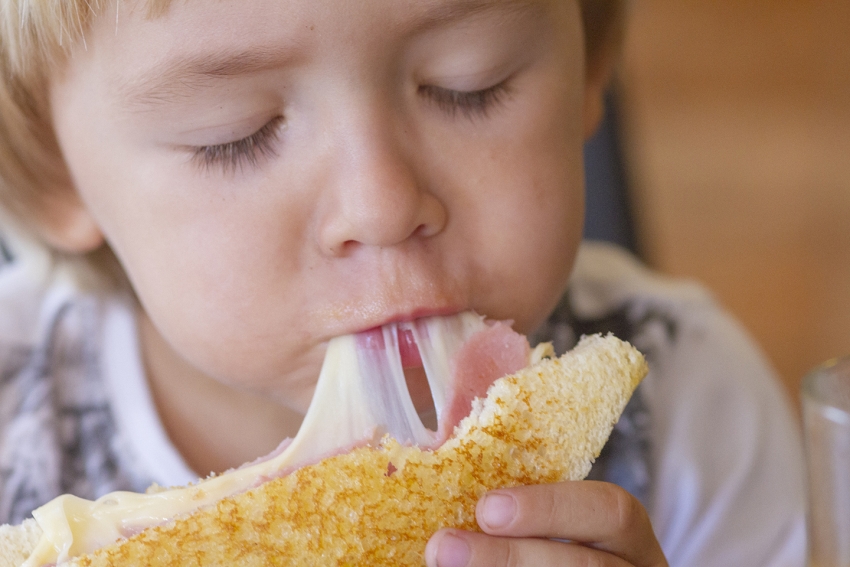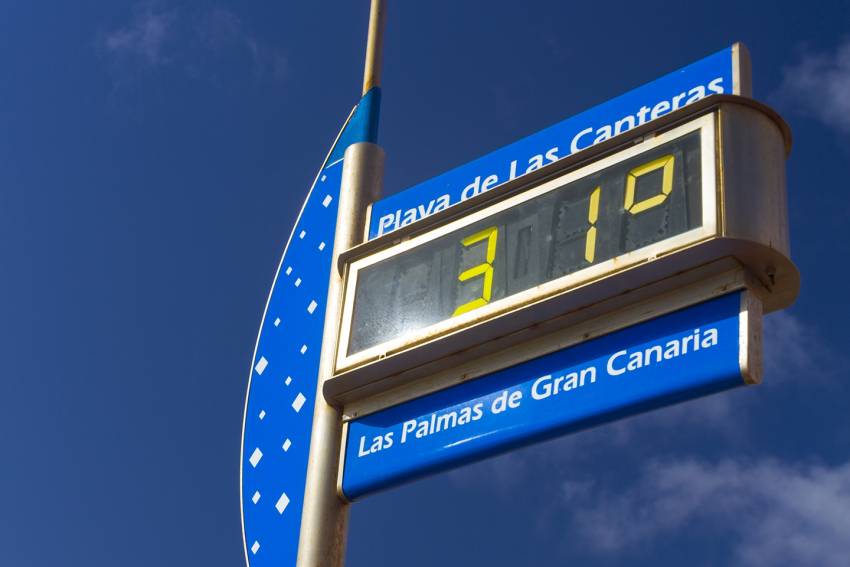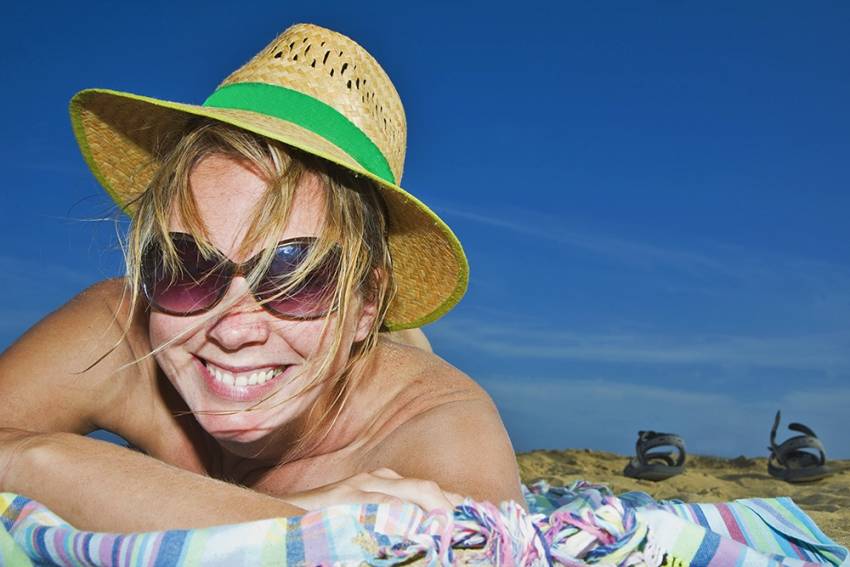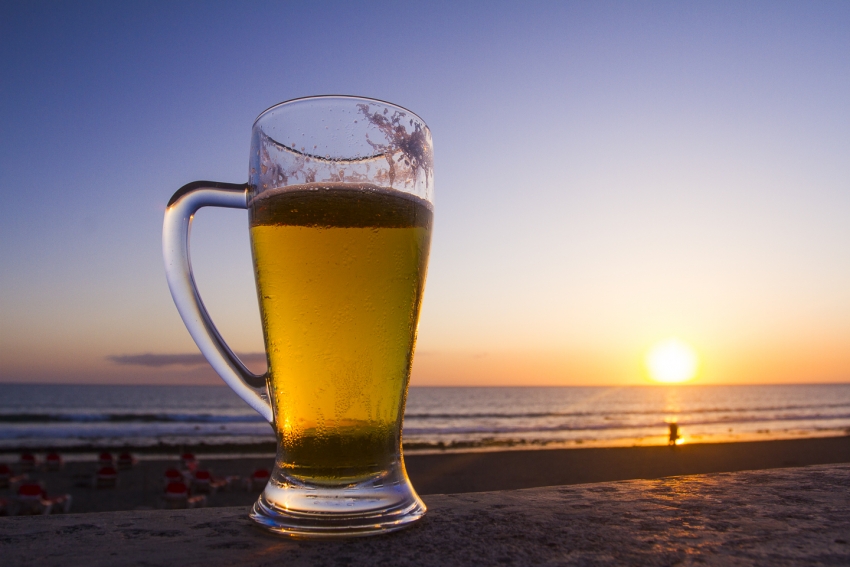Alex Bramwell
From Magma to Spaniards: A Brief History of Gran Canaria
Gran Canaria startede under the ocean and that's the way it'll end up. In the m,eantime, it's had a pretty eventful history.
The Economy: Boom Bust and Sunshine
From prehistoric times Gran Canaria's economy has depended on turning the sunshine into things to sell to passing ships. As demand went up and down for what the island grew, it experienced booms and busts: It's why the cathedral in Las Palmas took hundreds of years to finish.
Even before the Spanish it's likely that the island's original inhabitats traded with passing roman and Phoenecian ships until these disappeared. The Canarii then went through a few lean centuries when they were the main export of the islands: Slavers from Europe and North Africa raided regularly.
Crops
At different times large areas of the island were planted with sugar cane, coffee, grape vines, and cactus for cochineal. The Caribbean proved better for sugar production (although rum is still made on the islands), disease put paid to the wine (mentioned by Shakespeare), and artificial dyes destroyed the cochineal trade. Bananas are still a faithful crop but have to compete with cheaper Caribbean imports.
The lean periods saw thousands of Canarians migrate to South America, and especially Cuba and Venezuela. The modern economy of Gran Canaria is based around tourism, and Las Palmas’ huge container port. The island grows bananas, tomatoes, cucumbers and aubergines for the European market and olive oil and coffee are comig back.
Canarian wines and cheese are earning good reputations abroad. Gran Canarian cheese, particularly goat and sheep cheese from Guia in the north, regularly wins international awards. Gran Canarian wine is a mixed bag: The whites are excellent but the reds still lag behind vintages from Tenerife and Lanzarote.
Tourism
Catering to tourists dwarfs all other economic activities in Gran Canaria: Over three million visit Gran Canaria every year. The huge majority stay in the tourist resorts along the south coast.
Tourism is now the islands largest industry and its biggest employer.
What To Do When It's Raining In Gran Canaria
Gran Canaria sells itself to tourists as a sunshine destination where good weather is guaranteed. However, it does have to be wet every now and then or we'd be the Sahara desert. The good news is that there is plenty to do in Gran Canaria on the odd rainy day.
"Horrible" Gofio: The Canary Island Soul Food
Gofio is soul food in the Canary Islands. Most Canarians were weaned on bananas mashed up with gofio and many still eat it every day. It is so tightly entwined with local identity that it is best not not to tell anyone on the islands if you don't like it. At the same time Canarians aren't stupid. They enjoy cake and chocolate and ice cream just like everyone else. They wouldn't eat gofio if it was horrible. Wwould they?
Gran Canaria Oilve Oil: Gold from Sunshine
Gran Canaria is lucky that olive trees live a long time and don't bear grudges. For centuries the island's olivos were used as windbreaks and goat shade, their fruit pickled in mojo sauce or left to rot. Then, about 10 years ago, someone decided to crush a few olives and taste the oil.
Gran Canaria olive oil turns out to be delicious and farmers lucky enough to have olive trees on their land are relearning what their grandparents forgot. Our olives have gone from aperitif to the stars of the table.
Old Trees: New Tricks
There were presses in Gran Canaria in the 16th century so the Spanish must have planted olives as soon as they arrived. Most Canarian trees are old varieties that are rare elsewhere in Spain while one, the Verdial de Canarias, is unique to the islands.
These old cultivars give Gran Canaria olive oil a distinctive flavour: Fruity with a herbal edge like the smell or ripe tomatoes. It also has that peppery after taste that tickles the back of your throat: A classic sign of great olive oil.
Gran Canaria's olive trees grow on terrain too steep for mechanical harvesting so the whole crop is hand-picked. Since 100 kilos of island olives yields only 16.5 litres of oil all production is cold-pressed extra virgin olive oil.
The best Gran Canaria olive oil is sold unfiltered (therefore slightly cloudy) in local markets at 5 euros per 250 ml. You can also buy it in shops in the resorts but expect to pay more. Drizzle your oil on a simple salad or eat with crusty bread to appreciate the flavour. Don't combine it with balsamic vinegar (it's too strong and everyone is sick of the stuff).
Olive Country
There are olive trees all over the south east of Gran Canaria from Telde to San Bartolome but Temisas, between Santa Lucia and Agüimes, is the olive's heartland. The island's oldest olive press is in the village and it was here that the industry restarted. You can't miss the olivos fringing the terraced fields as you come into Temisas, especially if the trees are wearing their white hats in the wind. Bars and shops in the village sell the oil.
More To Olives Than Oil
So far the olive boom hasn't affected the supply of fresh olives in the markets. They taste horrible unless you cure them but the process is simple and worthwhile. It takes too long to do on holiday but if you live in Gran Canaria take advantage (and congratulations on a fine choice of island).
Look out for fat olives in the markets in November and December, or head to Temisas for the pick of the crop. The best ones are deep purple with a pointy end and soft, creamy flesh. To cure, nick each one with a knife and put them in an empty garafa (big plastic water bottle). Fill with water salty enough to float an egg and leave for two weeks. Then change the water and wait another two weeks.
To check if your olives are cured taste one: If your mouth puckers up wait another two weeks. When they are ready they are as good as the kalamata olives from Greece sold in little tubs in posh London delis. Bung them in mojo if you must, or store in olive oil or salty water before serving them smugly to your friends.
Gran Canaria's ancient olive trees, freshly pruned and fertilized, are standing proud again: The island has found yet another way of turning sunshine into gold.
The Historic Maspalomas Space Station Has Saved 10,000 Lives
The Maspalomas Space Station has saved 10,000 lives in 20 years by detecting distress signals from ships and planes. This is on top of its historic part in the Apollo moon landings.
The Maspalomas Space Station, also called the Canary Islands Space Centre, detects signals from distress beacons on ships and planes and from expeditions in remote areas. It then transmits their locations to the relevant emergency services. It is believed to have saved 10,000 lives in the past 20 years. That's more than one person per day!
In December 2012 it picked up a distress signal from a sinking yacht over 500km from the Canary Islands. A Superpuma helicopter saved the crew before the yacht sank, and broke the world record for a long distance maritime rescue at the same time.
Maspalomas and the moon
Started in 1960 as a NASA satellite tracking station it was extended in the 1960s to act as a receiving station for transmissions from the Apollo spacecraft. It was the first place on Earth to receive Neil Armstrong's famous words from the moon in 1969:
"That's one small step for (a) man, one giant leap for mankind"
Maspalomas' role in the moon landings was so important that Neil Armstrong himself visited the island just three months after returning from the moon. He flew to Gran Canaria aboard Air Force One along with fellow moonlanders Michael Collins y Edwin Aldrin and stayed at the Maspalomas-Oasis hotel for three nights.
By all accounts the astronauts had a good time in Gran Canaria even though it rained on their last day. They took a boat trip along the south coast, got on a camel, partied late into the night and enjoyed the food. Armstrong's wife liked mojo sauce so much that she took the recipe home with her.
While in Gran Canaria, Armstrong said that the moon was "a wonderful place, just like Maspalomas. The whole island is amazing".
You can see the receiving antennas of the space station from the roads between Maspalomas and Arguineguin. It is just up the hill from Pasito Blanco harbour. At this time visits are not possible.
Come To Las Palmas For Culture, Stay For Food And Fun
In brochure-land Las Palmas is full or tourists wandering around cobbled streets between museums and galleries. They eat authentic Canarian food, buy arts and crafts, and enjoy themselves in a demure, cultured sort of way without breaking a sweat.
You can do Las Palmas this way if you want: As the first Spanish city founded in the New World, it's gravid with history. It was attacked by cavemen, visited by Columbus, fought off an attack by Sir Francis Drake and got sacked by Dutch privateers. Vegueta is the perfect cultural destination: Compact, well-preserved and full of small, interesting museums. However, there is also a spicier side to the city that you miss if you focus on the past.
Cocktails at sunset
Down at the modern end by the beach, tourism is about catching waves, learning Spanish, scoffing tapas and dancing salsa until you drop. Visitors are discovering Las Palmas as an exciting, modern city with Latino flair. They may wander over to Vegueta to visit Columbus' old haunts but they spend most of their time having fun in the sun.
This alternative scene isn't as new as it sounds. Until the late 1960s Las Palmas was the main tourist destination on the island and the beach was covered in Scandinavians and Brits. After the resorts in the south took off the city went to sleep, resting on its ancient laurels.
Now not then
With millions of cruise ship passengers spending a day in the city, and three million tourist a year on the island for a week or two, Las Palmas has an opportunity to remind people that it is a destination in its own right. But it's not history and architecture that will bring the visitors back, it's today's city with its beach culture, great Spanish food and laid back cool.
We believe that modern Las Palmas is missing a trick by focusing on the city it was 500 years ago rather than the city it is now. Nobody leaps out of bed in the morning because they are excited about visiting a cathedral. But sunset cocktails, tasty tapas, warm sand and Latino rhythm? That sounds like fun!
There are bars by Las Canteras that do the best caipirinhas this side of Copacabana and the streets behind the beach are full of restaurants knocking out quality Spanish tapas. And then there's live music on the beachfront every Saturday, tapas night in Vegueta on Thursdays, carnival, the surf competitions, the marathon, the food and film weekend ... Las Palmas is already happening, it's just that nobody knows about it yet!
It is time for Las Palmas to get its mojo back and remind the rest of Europe that there is a Habana on this side of the Atlantic: That's the sexy Habana with mojitos and rumba by the way, not the Habana of crumbling buildings and long dead heroes.
Gran Canaria Foods That The Locals Love
Canarian restaurants all serve delicious papas con mojo and goat cheese, but there are lots of Canarian foods that don't make it to the menus. Here are the top ten local favourites that you have to track down on your own.
Donuts
Gran Canaria Donuts are light and sweet with a hint of lemon and knock the socks of those stodgy Crispy Crème things. They come as traditional sugar or chocolate doughnuts with a hole, or with a chocolate or custard filling. Donuts are sold in most Gran Canaria newsagents, bars and corner shops. Avoid on Sundays as there are no weekend deliveries and Donuts go stale in hours.
Bocadillo de Calamares
Deep fried squid rings in a bread roll with plenty of lemon juice. The quintessential Canarian beach snack and available at any local bar or café close to the sand. For the best ones pick a bar with a stream of locals walking out carrying plastic bags.
Barquillo
Barquillo is ice cream cone without the cold filling. It comes in sheets or rolls and is a popular Canarian beach snack, especially on Las Canteras Beach in Las Palmas. Watch out for vendors walking along the beach carrying a basket.
Polvitos
A dessert that has taken Gran Canaria by storm that we think was invented in the Novillo Precoz (a fantastic steak restaurant) on Calle Portugal in Las Palmas. Polvitos are basically cheesecake made with whipped cream instead of cheese. They are flavoured with dulce de leche and are sweet and moreish. Some Gran Canaria restaurants have given up serving any other pudding.
Nisperos
Known in English as loquats these little orange fruits are common all over Gran Canaria but rarely make it into the shops as they rot quickly. To eat a nispero bite off the stalk and squeeze out the juicy flesh in one go. Don’t forget to spit out the big, brown seeds. Their flavour is delicate and a bit like tangerine.
Pollo en Adobo
This never makes the list of traditional Canarian foods, but it's on most dinner tables at least once a week. Pollo en adobo is chicken marinated in lots (and lots) of garlic and fresh coriander and then fried. Pungent and delicious!
Sandwich Mixto
It’s hard to believe that two bits of white bread and a slice of ham and cheese can be so delicious. The sandwich mixto is the Canarian version of the ham and cheese toastie and is served for breakfast and as a snack at any time. The secret is in grilling the bread with plenty of butter.
Leche y Leche
An espresso shot with a dash of milk and a tablespoon of condensed milk to sweeten it. The condensed milk sits at the bottom of the cup and you have to stir it well before drinking. In Tenerife order a baraquillo and in Lanzarote a café bonbon.
Clipper
Clipper is Gran Canaria’s answer to Fanta and Coca Cola. It’s a virulent red colour and tastes of strawberry air freshener. Canarians are proud of their local soft drink and guzzle it by the gallon. Try it if you have a sweet tooth but don’t ask too many questions about the colour and watch out for stains! For the cautious there are clipper flavoured ice lollies that taste pretty good.
Pepe Chiringo
Don Pepe started with a hot dog cart and now owns a chain of fast food restaurants in Gran Canaria. The food is cheap and cheerful and goes down well after a few beers. There is one on Avenida Tirajana in Playa del Inglés and another by the big park in Maspalomas. Gran Canaria’s answer to the Golden Arches and without the creepy clown!
Do you have a favourite Gran Canaria food that never makes the Top Ten lists? Let us know and we'll add it to the list
Overheard in Gran Canaria: Tourist Complaints
Three million tourists come to Gran Canaria every year so we get our share of complaints. While some are legitimate many are caused by people with ridiculous expectations and no knowledge of local culture. Gran Canaria makes a huge effort to please all its guests and most go home tanned and happy. That said, there's no pleasing some people:
The Best Nudist Beaches In Gran Canaria
A useful guide to the best nudist beaches in Gran Canaria; All the info you need to find them and enjoy them with no hassle.
Gran Canaria Info recommends:
- Default
- Title
- Date
- Random

